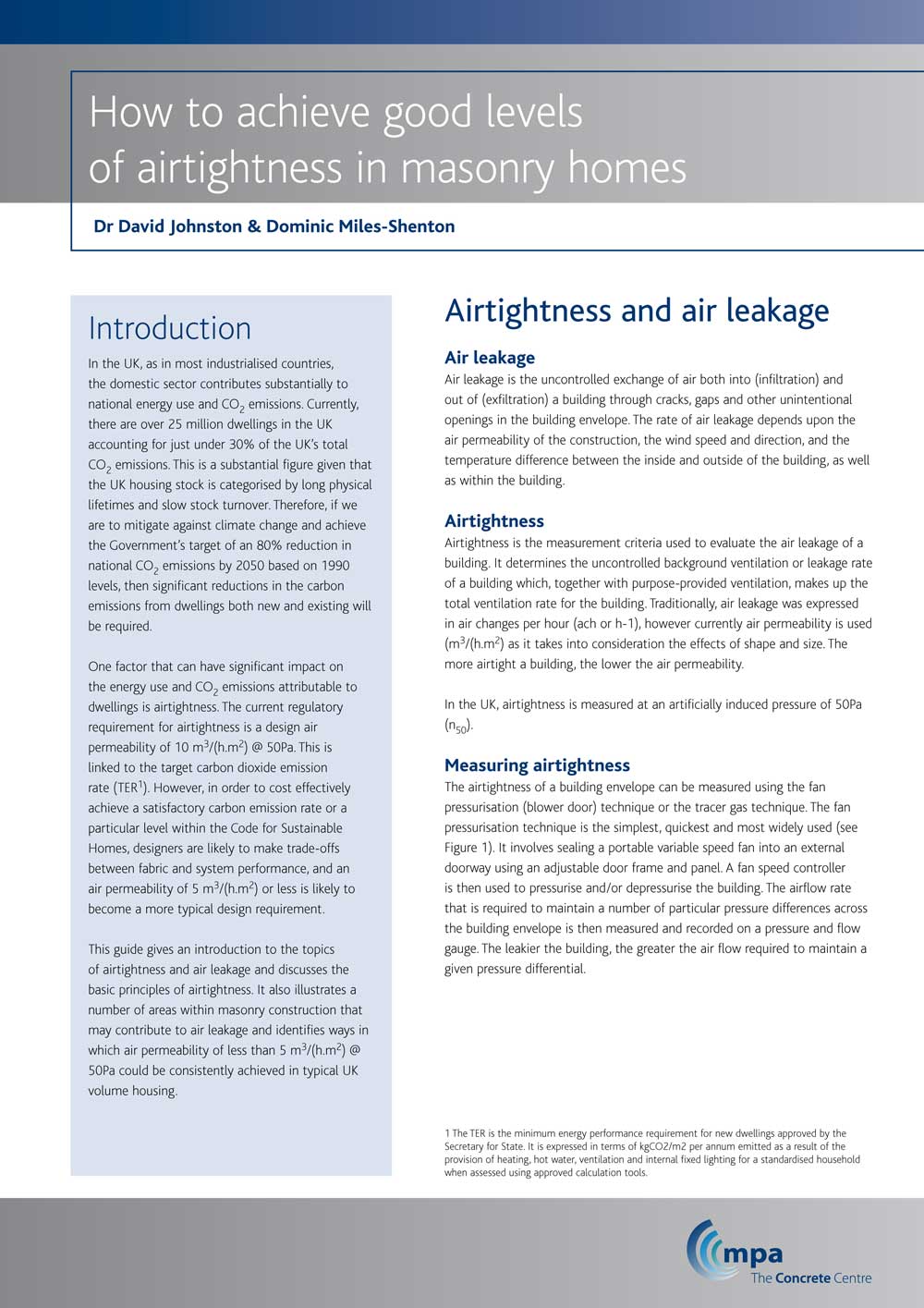Airtightness
The term airtightness refers to the measurement criteria used to assess the uncontrolled air leakage in buildings i.e. through gaps, cracks and other unintentional openings (see Figure 1). Since the 2006 edition of Part L (2010 in Scotland) a limiting backstop value has been set for air leakage in new buildings, which for new dwellings has been reduced from 10 to 8m3/(h.m2)@50Pa in the 2021 edition of Part L. This also now requires a pressure test to be carried out on every new dwelling.
Figure 1: Some common air leakage and ventilation paths in dwellings
/Airtightness/Air-tightness-fig-1.jpg.aspx?width=725&height=294)
The Concrete Centre publication ‘How to achieve good levels of airtightness in masonry homes’ provides an introduction to the topic of airtightness and best practice methods for delivering it in new build homes.
How to Achieve Good Levels of Airtightness in Masonry Homes
